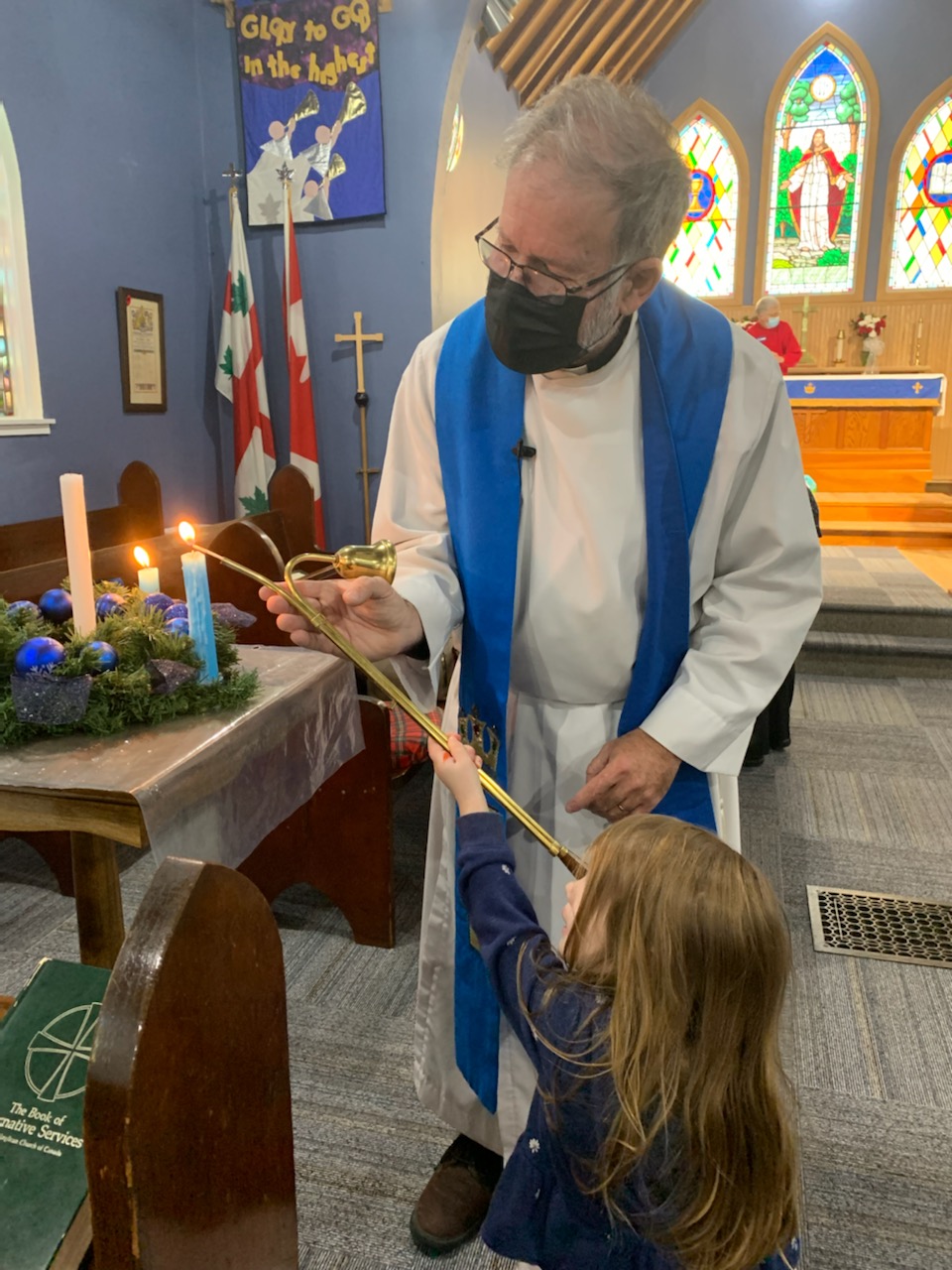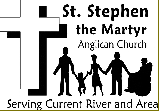Anglican Worship

If you have not been to a worship service, it may be unfamiliar, as some of the practises of worship have changed in the last 30 years. This article outlines what to expect during a worship service using the order for a Eucharist from the Book of Alternative Services.
Public worship is a way for people to connect with God. It is where they receive most of their Christian teaching. It is also a way to meet people with similar beliefs and values and make friends. Attending worship as a family strengthens family bonds. The church is one of the few institutions in our society that welcomes all: young and old, rich and poor, and all ethnic backgrounds; the only criterion is that people are open to having a faith in Jesus Christ.
The worship service is a blend of ancient and modern. The roots of Christian worship are based in the worship in the Jewish synagogue with the reading of scripture and prayers. In the 1980s, the church’s worship has changed, attempting to become more up to date in terms of language and practise. Many of these changes have been modelled on scholarship of the practise of the early church with its focus on baptism.
Types of Worship Services
In the Anglican Church the most common worship services are the Eucharist, Morning Prayer and Baptism. The Eucharist, also called Holy Communion or Mass, is divided into 4 parts: the Gathering of the Community, the Proclamation of the Word, the Celebration of the Eucharist and the Dismissal of the Community. The Eucharist is based on the Last Supper, when Jesus ate a Jewish ritual meal with his disciples and said a prayer of blessing over the bread and wine. Jesus gave the meal a new meaning when he likened the bread to his body and the wine to his blood and the salvation of people through his death.
Morning Prayer is the Proclamation of the Word. It is based on the offices (prayer service) that monks said.
Baptism is the symbolic washing of a person with water to wash away sins, and the person being baptized makes a public proclamation of his or her faith in Jesus. Baptism normally takes place during a Eucharist service instead of privately on a Sunday afternoon, as was the case until the 1980s. It is a sacrament in that by taking part in the ceremony, something good happens spiritually, God gives the person being baptized grace to be transformed.
The Gathering of the Community
The Gathering of the Community is just that. Individuals come from all parts of the city and are gathered into a community. Some people you only see on Sundays. Often people are exchanging greetings as they get themselves settled.
Plan to arrive 10 to 15 minutes before the start of the service time and learn about the church building.
People will sit through most of the service in benches called pews. The pews tend to fill from the back of the nave forward, so if you arrive late expect to sit at the front. The nave is the name given to the main body of the worship space and it is Latin for boat.
The first people you will meet are sidespeople, also called sidesmen or greeters. They hand out bulletins that contain an outline of the worship service and announcements. If you have any questions, ask them. You may want to know where to hang up your coat, the arrangements for children or where the washrooms are. For those with vision difficulties ask about large print service books and hymnbooks.
Children
If you have children you may want to find the room where the Sunday School classes are held and talk with the teacher, or if your children are babies you might want to find the change table.
At the beginning of the service, children sit with their family. Many churches have children come up for a children’s talk with the priest or lay person, then the children may go to Sunday School and return to have communion with their family. You may need to go down to Sunday School with your child until he or she is comfortable. Also, if your child prefers to sit with you for the whole service, it is okay. Thunder Bay Anglican parishes have screening programs for Sunday School teachers.
Preparation to Worship
A custom of people when they first sit in the pew is to bow their head and say a short prayer.
You may want to look through the service before it begins. The Anglican Church uses two service books, the Book of Common Prayer (BCP) and the Book of Alternative Services (BAS). At St. Stephen’s the BAS is used. Look in the bulletin to see what book and what service is being used and you will find the BAS and hymn book in the pew.
The Celebrant (also called a presider) leads the congregation in worship and is usually a priest. The priest is employed to work for the church in the capacity as a leader of the congregation. When it is Morning Prayer, the Officiant may be a deacon or a layperson who is called a Parochial Lay Reader. On special occasions the Bishop will be present. The Bishop is head of the Diocese, which is a geographical area and the Diocese of Algoma goes from Thunder Bay along Hwy 17 to the Quebec border and down to Gravenhurst.
Lay people are also involved in the worship service singing in the choir, reading scripture, leading the Prayers of the People, and administering the chalice (cup) of wine; see Eucharistic Assistant. The server assists the Officiant; see Servers.
The service begins with the singing of a processional hymn from a hymnbook. Hymns are songs and they are sung standing.
During the service prayers may be said kneeling, sitting or standing, and the Celebrant/Officiant acts as a Master of Ceremony and tells the congregation what to do.
The Proclamation of the Word
The Proclamation of the Word is listing to readings from the Bible and a sermon and responding with a confession of faith and prayers.
The basis of Christian life and worship is the Bible. It is a library of books that is divided into two parts, the Old Testament and the New Testament. The Hebrew Bible is the Old Testament, and the church wrote the New Testament, and it has Gospels, 4 books talking about the life of Jesus on earth, and letters written to the early church. We believe that God speaks to us through the stories and sayings in scripture.
The Proclamation of the Word normally is a reading from the Old Testament, psalm, epistle (Latin for letter) and Gospel, sermon, confession of faith, Prayers of the People, Confession and Peace. To shorten the service, some readings and the confession of faith may not be read. The congregation reads the psalm out loud. Psalms are from the Old Testament and reprinted in the BAS or BCP. People sit to listen to the readings except for the Gospel, which people stand for.
The psalm and readings are chosen from a schedule of readings called a lectionary. The Anglican Church uses the Revised Common Lectionary, which the Lutheran, Roman Catholic and United Churches also use; see Lectionary. Directions for readers are found in Reading a Lesson.
The Celebrant will give a talk called a sermon or homily, which is based on the readings and attempts to relate what the scriptures are saying to everyday life and the concerns of the congregation.
People then stand and say either the Nicene or Apostles’ Creed. This is called the confession of faith and is the congregation’s response to the scriptures and sermon. A church council at Constantinople in 381 A. D. wrote the Nicene Creed. The Apostles’ Creed was used as a baptismal confession in the early church, and its present form dates from the 4th century CE.
Next comes the Prayers of the People. The Prayers of the People are part of the work of the church, asking God to help in particular situations and with particular people. God is thanked for the blessings received. Often a book is located where people enter that they can write requests for prayer, which will be included in the Prayers of the People. See Prayers of the People if you would like to know how prayers are lead.
A general Confession is said, normally people are asked to kneel, followed by the absolution and, in the BAS, the peace. The Bishop or priest gives the absolution, which is the declaration of forgiveness in Jesus’ name.
For the peace, people stand and shake hands with each other; in some cases, exchange hugs. Although since we have had COVID, people are much more restrained. The peace symbolizes several things. As it follows the confession and absolution, it symbolizes reconciliation between people. It also symbolizes greeting Christ in each person and the fellowship in heaven.
The Celebration of the Eucharist
The Celebration of the Eucharist begins with the singing of the Offertory hymn, the bread and wine are brought up and an offering plate for people’s donations is passed. If people have already made their offering or if they are not able to make one, just pass the plate. In the early church the bread and wine used in the Eucharist, was provided by the people.
The Eucharistic Prayer is based on Jewish prayers of blessing where God is blessed for the salvation that God brings, and it includes words Jesus used during the Last Supper with his disciples.
People will move up to the sanctuary rail at the front of the church to receive the bread and wine. The act of receiving the bread and wine is called communion. The sidespeople may facilitate the flow of people.
If you are baptized you may receive communion, both bread and wine. If you prefer, you do not have to take the wine. If you are not baptized, you may receive a blessing. If you do not wish to go up, remain seated in your pew.
The Dismissal of the Community
The service concludes with a closing prayer, blessing, announcements, and a recessional hymn. Normally a coffee hour follows the worship service. Please come, have a cup of coffee, and say hello.
A Eucharist service lasts an hour to an hour and twenty minutes, depending on the length of welcome and sermon, additional music, and number of people receiving communion; Morning Prayer fifty minutes or so.
See also the notes on The Holy Eucharist pp. 174 to 182 in the Book of Alternative Services.
For further information on:
- how worship is planned, see Planning Worship;
- on the background of the Anglican Church including its worship see New to the Anglican Church ; and
- for information on customs and names of things in worship and church government; see Things to Know.


